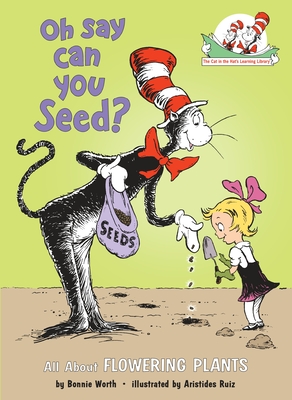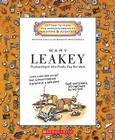Oh my. Being a parent calls up such reserves of imagination, patience and love. And a well-stocked bookshelf. A wonderful way to get your point across. One of Lizzie and Mona's wonderful pre-school teachers always referred to things like kids' tantrums and meltdowns as opportunities. I would say you grabbed the opportunity on that one.
We've received a question about science books for the four-to-six (or so) crowd. A number of good series exist, so I thought I'd toss out a list:
The Magic School Bus, by Joanna Cole. I'm a purist about these: I only carry the original books, which combine the wonderfully eccentric Ms. Frizzle, her students, the ever-morphing bus, and very brief papers written by students. There was a TV show, and then chapter book "novelizations" of the show, but I'm talking about the so-called Classics here. The bus turns into a different object (spaceship, submarine, beehive, etc) and puts the members of a field trip literally into whatever they're studying:
There's lots of wisecracking, lots of facts, and very busy pages. I got into the habit of reading only the main story (that's the typeset part at the top center of above page) the first time through, then gradually adding the comments from students and the kids' papers on the lined pages on later readings. My respect for the science of the Magic School Bus books went way up when Mona's seventh grade class used The Magic School Bus at the Waterworks as the basic text for their unit on water purification.
I've met a handful of families who have worked their way through most of the Let's-Read-and-Find-Out Science series -- they come in both Level 1 and Level 2. Both levels are readable in one sitting, and quite clear on whatever their topic. They cover a huge range: Bugs are Insects, How a Seed Grows, From Egg to Chick, What Happens to Our Trash?, Volcanoes, Floating in Space, Why Do Leaves Change Color?, Oil Spill! The Moon Seems to Change, and on and on. The inside covers of all of them list all the titles, sorted by topic.
 The folks who own the rights to Dr. Seuss are putting out a series called The Cat in the Hat's Learning Library, aimed at kids starting around 3 or 4. The titles play off Seuss's real ones: Inside Your Outside, There's No Place Like Space, Is a Camel a Mammal?, If I Ran the Rainforest. It's all written in Dr. Seuss meter, which could eventually drive a parent nuts.
The folks who own the rights to Dr. Seuss are putting out a series called The Cat in the Hat's Learning Library, aimed at kids starting around 3 or 4. The titles play off Seuss's real ones: Inside Your Outside, There's No Place Like Space, Is a Camel a Mammal?, If I Ran the Rainforest. It's all written in Dr. Seuss meter, which could eventually drive a parent nuts.Let's start at the top with(the book goes on to explain muscles later.)
your brain. It is key.It controls all you do --helps you laugh, learn, and see.
It makes your legs movewhen you run, jump, or walk.It makes your face movewhen you blink, smile and talk.

Then there's a biography series by Mike Venezia called Getting to Know The World's Greatest Inventors and Scientists. (He also does series on musicians, on artists, and on all the U.S. Presidents, should you be looking for a biography of Chester A. Arthur.) They're a little cartoony, but explain the basics about the scientists' work as well as their personalities. The series also includes both women and people of color. Marie Curie, Jane Goodall, Charles Drew (blood transfusions), Stephen Hawking, Albert Einstein, Rachel Carson are among those there.
Love,
Deborah



No comments:
Post a Comment